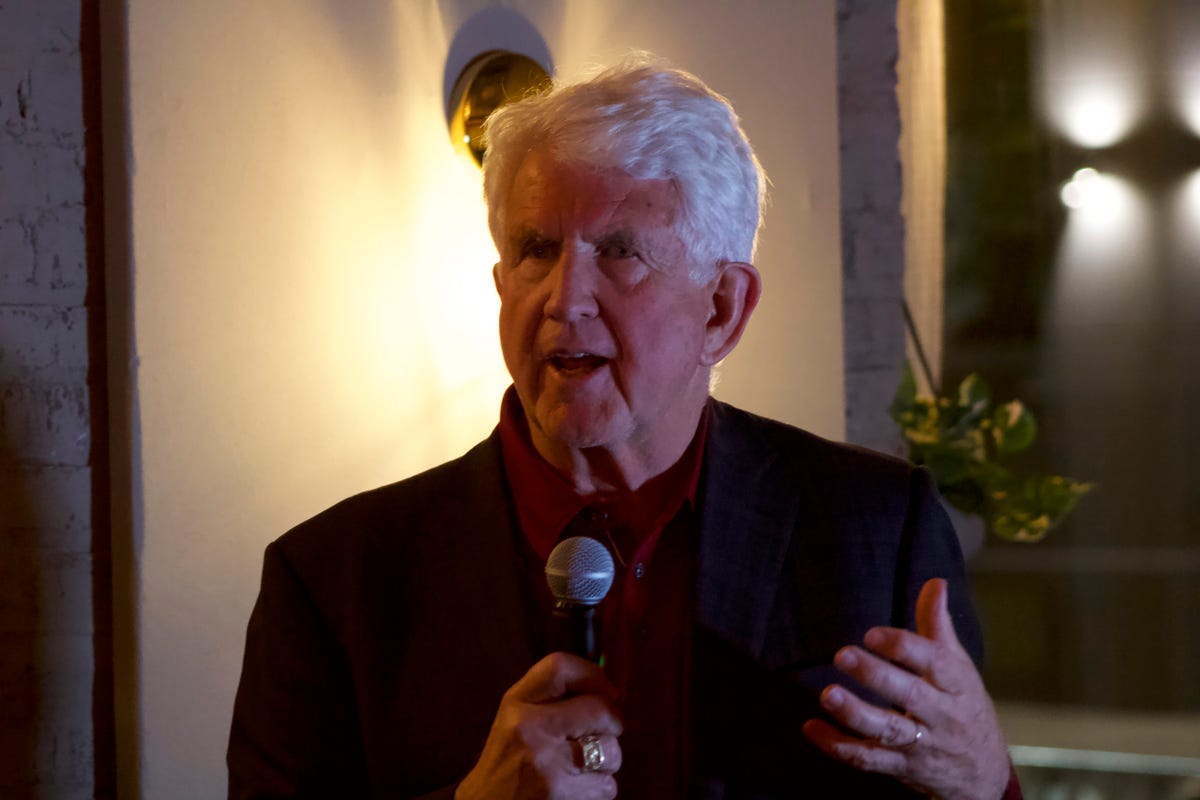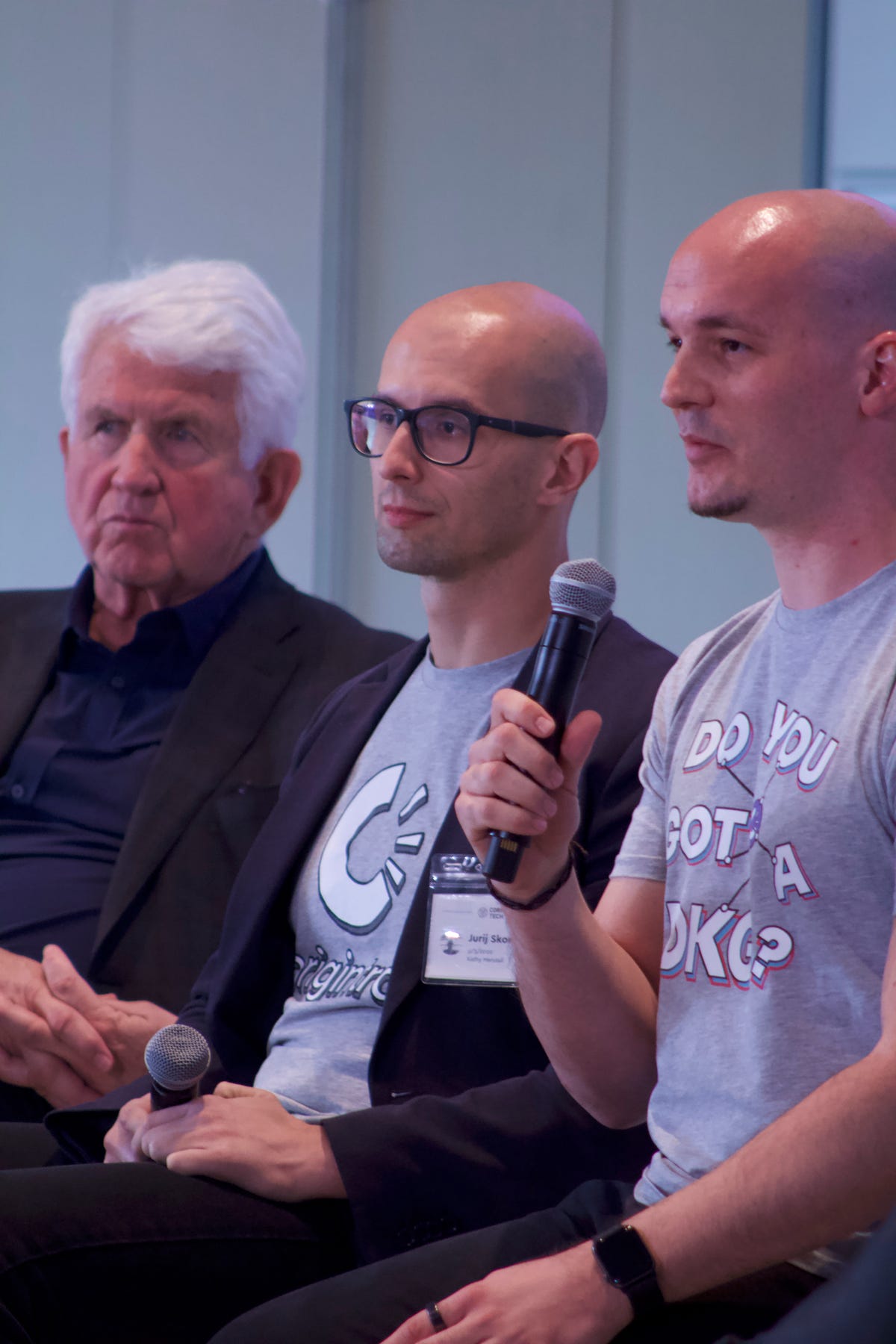
“For the first time, I am trying to say exactly what kinds of value are created by networks,” Bob Metcalfe, inventor of Ethernet, told a small group during a soiree on the sidelines of The Knowledge Graph conference. He predicts decentralized knowledge graphs, which marry knowledge graph databases with connectivity, will create new forms of value.
Arnold Safanova
When Bob Metcalfe was selling Ethernet to the world as a new networking technology in the 1980s at 3Com Corp., he had a clever sales pitch: You’ll get more value out of the product the more of it you buy.
What was a cheeky pitch hid a deeper element of truth: Networks are more valuable the more things they connect.
Later, Metcalfe refined what he was talking about, formulating what was called “Metcalfe’s Law.” The law says, The value of the network increases as the square of the number of entities taking part in the network, where entities could be computers, but also humans, as in the case of Facebook. The value is squared because that’s the number of connections that can be formed.
Things that get better in this way, said Metcalfe, have what he has christened “network effects,” a kind of centripetal force where more and more participants induce even more participation, in a virtuous cycle. Facebook shows that: The more people join, the more other people are inclined to join.
Metcalfe is still refining his pitch for his Law and learning at the same time. “There are going to be all kinds of network effects in Web3,” said Metcalfe, during an informal gathering in Williamsburg, Brooklyn, on the sidelines of The Knowledge Graph conference, a conference where enthusiasts of knowledge graphs share technology and techniques and best practices.
“For the first time, I am trying to say exactly what kinds of value are created by networks,” Metcalfe told ZDNet at the Williamsburg event. “What I have learned today is that knowledge graphs can go a lot farther if they are decentralized,” said Metcalfe. “The key is the connectivity.”
Earlier in the day, Metcalfe had given a talk at the KGC main stage, “Network Effects in Web3.” In the talk, Metcalfe explained that “networks are valuable,” in many ways. They offer value as “collecting data,” said Metcalfe, the ability to get data from many participants. There was also sharing value, sharing disk drives, say, or sharing files. Netflix, said Metcalfe, has “distribution value — they distribute content and it’s valuable.”
There will be new forms of value creation, Metcalfe believes, based on startups that combine knowledge graphs with connectivity. The event in Williamsburg was hosted by one such startup, OriginTrail, which was founded in 2013, is officially headquartered in Ljubljana, Slovenia, and has offices in Gibraltar and the US. Metcalfe is an advisor to OriginTrail.

Metcalfe, left, at the KGC conference Tuesday with OriginTrail general manager Juri Skornik, center, and CTO Branimir Rakic.
Arnold Safanova
OriginTrail is creating what it calls the first “decentralized” knowledge graph, a knowledge graph whose nodes can be networked.
The basic idea is that while “Layer 1” technologies of blockchains authenticate items, the “Layer 2” technology of the OriginTrail’s Distributed knowledge Graph lets you query and interact with things that have been authenticated. Everything that is unique has a “Universal Asset Locator,” or UAL, an analog to Web URLs. The UALs are meant to be compliant with the W3C’s spec for “decentralized identifiers.” The form is just like an HTTP address, preceded by the identifier tag “dkg://”, for distributed knowledge graph, with the address of the particular item following.
Transactions can happen as people “publish” things on the Internet with a unique UAL — through a simple “create” statement — that is then recorded by the decentralized knowledge graph of nodes, currently a couple thousand.
Everything that is published is a unique asset, a digital twin, so that it can stand for real-world objects, such as sneakers or whiskey. It can be sold to another party, who “takes control of the state of that graph,” as Rakic explains, by giving the person the NFT that has the UAL.
The nodes each have graph databases that have pieces of the collective graph, and they each function in a permissionless, peer-to-peer fashion that is analogous to how blockchains function. Similar to blockchains, those who run nodes to verify published things are rewarded by the people who publish the things.
OriginTrail’s knowledge graph relies on multiple Layer 1 blockchains, but the company is soon going to introduce its own blockchain, running as a function of the Polkadot blockchain.
As co-founder and CTO Branimir Rakic explained Wednesday during a technical presentation, “blockchains are not good databases.” Blockchains can be queried, but only in a limited fashion, said Rakic.
What’s needed, maintains Rakic, is a “semantic network” on top of blockchains. That’s what the company proposes with its distributed knowledge graph.
By combining Tim Berners-Lee’s notion of “The Semantic Web” with Web3, said Rakic, you’ll get “The Semantic Web3.”
“I like where it’s going,” said Metcalfe of OriginTrail’s approach. “All this stuff — DeFi, DOAs, crypto — all the decentralized stuff of Web3, it’s all going in this direction of sharing value,” said Metcalfe.
Metcalfe told the group at the Williamsburg soiree that decentralized knowledge graphs will make possible a kind of eternal springtime for artificial intelligence.
“AI was invented in about 1968, when I was a graduate student,” he said. “And for years, AI would rise and then it would fall, and it fell because AI ran out of data,” explained Metcalfe, “AI relies on data.”
“Well, it’s not going to fall, it’s going to continue to rise, because the decentralized knowledge graphs are going to give AI more and more data.”
Metcalfe, who for a decade served as a judge of the startup competition at SouthbySouthwest, was asked by ZDNet how he rates OriginTrail’s chances of success as a company. “The weakness of it is that it’s too complicated to explain” to ordinary mortals, said Metcalfe of the technology. The OriginTrail technology appears a bit like middleware, which is a category that only tends to excite a handful of people. “Yes, and I’m one of them,” said Metcalfe.
Despite the complexity of the tech, “What they are doing is right in line with where things are going.” More importantly, he took on the advisor role because he’s learning from what the company is doing, educating himself on what new forms of value there will be.
The Knowledge Graph Conference is in its fourth year, having begun life as a small affair in a ballroom at Columbia University in 2019. This year, after two years of virtual-only proceedings, the conference has blossomed into a sprawling hybrid event, with dozens of panels as well as live sessions at the Cornell Tech campus on Roosevelt Island in New York City. The program runs through May 6th.



